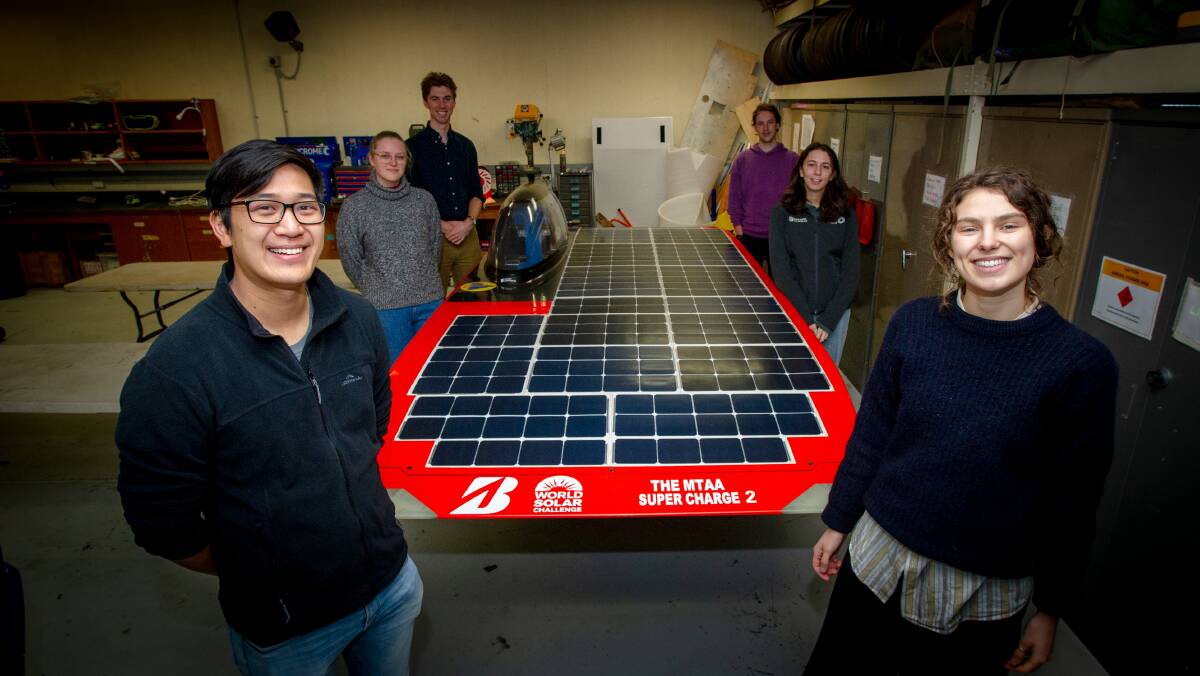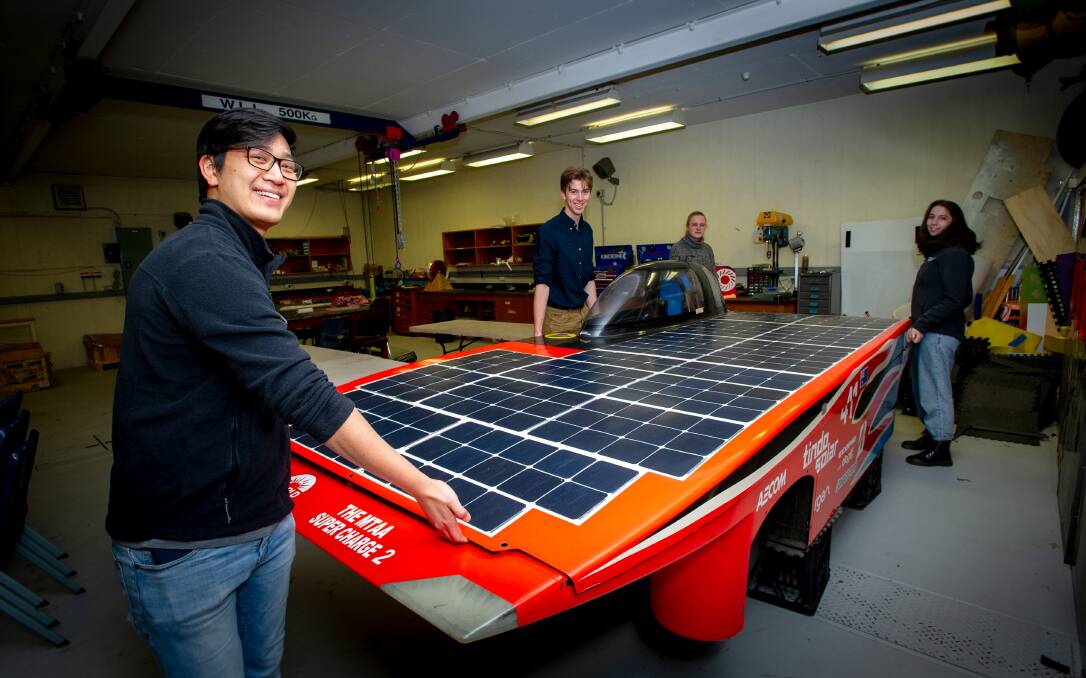
A greener, quieter take on Summernats is set to take over the streets of Canberra.
Subscribe now for unlimited access.
$0/
(min cost $0)
or signup to continue reading
The Australian National University Solar Racing team was devastated when the Bridgestone World Solar Challenge was turned virtual because of COVID-19 travel restrictions.
The biennial event challenges teams to engineer a solar-powered vehicle and drive it from Darwin to Adelaide.
ANU Solar Racing were poised to host their launch event in February when the news broke the October race was cancelled.
Business lead David Lim said it was a huge blow to the team who had worked on their entry for a year.
"We advertise it as a trip of a lifetime. It's a really great journey up to desert Australia and so having that cancelled... left the team feeling pretty sad," he said.
The team didn't want their efforts to go to waste so they joined forces with two of the top Australian solar racing teams, private enterprise Team Arrow and UNSW's Sunswift Racing.
The result was a new entity and event called the Aussie Solar Challenge. About 11 Australian teams will compete in the event from October 17 to 22.

They'll start out at the Wakefield Park Raceway near Goulburn with two days of scrutineering and track testing followed by three days of racing events.
On the final day teams will do a ceremonial drive around Canberra to show off their amazing feats of engineering.
Between now and October, the team of almost 40 ANU students will be working on fine-tuning their car, dubbed Solar Spirit.
Mr Lim said it was a nod to their major sponsor, Spirit Super, and the tough times the team had worked through.
"Our car is more than just carbon fibre, wire and mechanical parts. It has a spirit," he said.
The technical team is split into mechanical and electrical sub-teams.
READ MORE:
The mechanical group is responsible for designing the external shape of the car, brakes, suspension, steering and aerodynamic analysis.
The electrical group works on the solar panels, a super thin battery, reverse camera, headlights as well as programming software to control the electrical components.
Most of the parts are built by the students in a workshop on campus where they try to reuse as many parts from previous years as possible. The carbon fibre chassis is the only major component built externally by a Sydney firm.
Meanwhile, the marketing and sponsorship team members have been approaching companies for funding and in-kind support.
Technical lead Rebecca Craine said the biggest change from their 2019 entry was going from four wheels to three.
"Less wheels mean less rolling resistance on the road, less weight in the car," she said.
Team lead Ruby Jones said graduates who had been part of the solar challenge in the past had been scooped up by companies such as Tesla.
"There's a lot to say about this project for allowing students to work across these disciplines in a way that you don't often get to experience in uni but is often very, very essential in real life applications," she said.
Our journalists work hard to provide local, up-to-date news to the community. This is how you can continue to access our trusted content:
- Bookmark canberratimes.com.au
- Download our app
- Make sure you are signed up for our breaking and regular headlines newsletters
- Follow us on Twitter
- Follow us on Instagram


